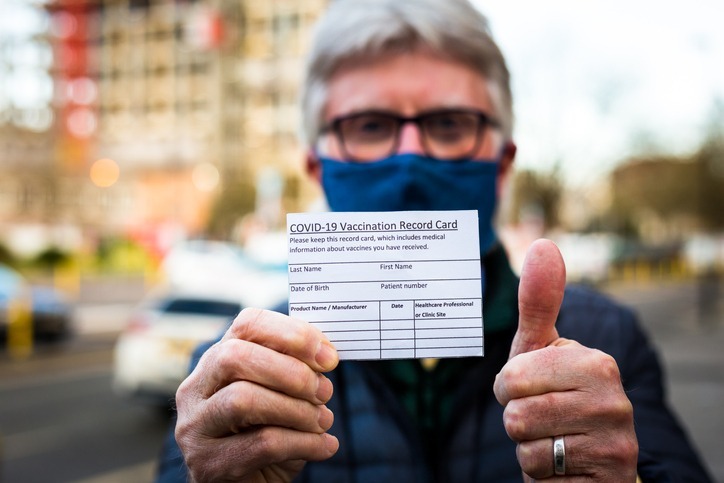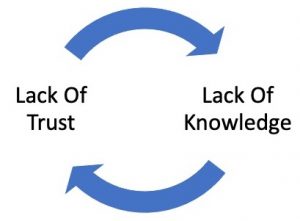How communicators can combat vaccine skepticism
Try these empathetic tactics to tamp down resistance and hesitancy among employees.

As the vaccine rollout continues, every forward-thinking employer is concerned about one thing:
“What do I do about employees who are hesitant about getting vaccinated?”
This is a powder keg of a subject, because you have business concerns and safety conflicting with people’s right to privacy and their right to make their own health decisions. This piece is not about that debate. Emotions run high, but there are basic business truths that employers will be faced with.
For example, you may need full compliance to get into a safe working office, or you may have clients who require that your employees be vaccinated. It may even be a point of difference in the marketplace at some point. Getting people vaccinated will, for many, be vital to moving their business forward.
Swaying the skeptics
In recent surveys, 30% of respondents said they will wait or refuse a vaccine altogether, while 7% say they will get vaccinated if it is required. Regardless of your industry or workplace, this is a conflict you’ll have to address. Here are some tips that will help you navigate these difficult conversations:
“Should,” “have to” and “must” shut down the conversation.
Whenever people promote a healthy behavior, the first approach they try is to tell their audience they “should” do something. It’s tempting (and usually factually correct), but this approach never works with an audience that is resistant to a behavior. In fact, studies show that using resistant persuasion often makes people dig in deeper to their existing beliefs.
They will do the opposite of what you tell them they “should” do. And giving them more information without first winning their trust won’t work. It’s a loop that we can all fall into that looks like this:

The reason people don’t want a vaccine is due to lack of trust. The reason they lack trust is due to lack of knowledge. The reason they aren’t open to knowledge? Lack of trust.
Any new behavior often brings high perceived barriers and low perceived value. We also live in an era where many don’t trust our institutions (government, companies who developed vaccines, or even the federal health officials). Information alone does not penetrate that barrier.
How do you appeal to people who don’t want to hear what you have to say?
1. Listen.
People are scared and uncertain, even though they might not admit it.
The worst thing we can do is be dismissive of this fear. When people feel heard and understood, they trust more. And lack of trust is the primary barrier.
If you haven’t already, it’s a good time to start the conversation with your employees and hear what they say. Don’t dismiss people who are hesitant or immediately bombard them with information that counters their concerns. First understand where they are coming from, and listen to their deeper concerns.
We interviewed one woman who said she would not get vaccinated because she was only 30 and a mother, and she feared the long-term effects. She linked her vaccine hesitancy to her role as a mother.
These are the types of insights that will help define your narrative later on.
2. Appeal to their internal stories.
Our internal stories make up our identity. These are the stories we tell ourselves about ourselves.
In the example above, the woman we interviewed thought, “I’m not getting the vaccine because I am a good mother.” That’s a competency identity. We’ve heard people use the same identity and make the opposite argument, such as: “I got vaccinated because I want to stay healthy for my family.”
Another common example of a competency identity is when someone engages in a behavior that makes them feel “smarter.” Your message will need to attach to something that might supplant the influence of that part of people’s identity, such as a value-based message or an even stronger competency-based message.
3. Give them control.
You know why people (especially men) don’t wear masks? Because wearing one (to them) means they are vulnerable or even weak. The pandemic has taken control away from our own lives, and refusing to wear a mask is the last bit of control they feel. Many will not get a vaccine for the same reasons.
So, change the narrative. Make getting vaccinated a way to gain more control of their lives and their own mental health, for example.
4. Earn trust.
Keep communicating with your employees, and be sure your information comes from reliable, objective health sources. With so much misinformation flowing, you have the opportunity to fill the gap and be the de facto source of truth.
This goes beyond mass emails. It requires training your managers to be ready for questions and concerns. These interpersonal encounters are often used by employees to measure the sincerity of the corporate message.
5. Remove barriers.
Anything you can do to make getting the vaccine easier will help with compliance.
Give employees paid time off to get vaccinated, and be sure to recognize those who do. If you can gain permission, schedule vaccination events at your workplace, or try creating some sort of vaccination caravan to make it a community event.
6. Show them what they gain.
More than 90 studies have shown that telling people what they gain by changing their behavior is far more successful than imposing fear-based (“get it, or else!”) messaging.
Getting vaccinated enables people to move more freely, it makes them part of a greater solution, and it creates a sense of security that’s been missing. Getting vaccinated means less of infecting someone they love. There are lots of ways to share stories that demonstrate how getting vaccinated would enhance their lives.
7. Normalize it.
As more and more people get vaccinated, it will become normal and accepted as a safe solution. That alone will help open the door to communications.
Before any of us engages in any new behavior, we ask ourselves, unconsciously, three questions. Without three “yes” answers, we’re not changing. The questions:
- Can I do this?
- If I do this, will it make a difference?
- Do people like me do this?
Keep these in mind as you create your communications plan, and make sure you are always working toward the three “yes” answers from your employees’ internal stories. You can tackle the first two questions with the messaging you develop. You can earn trust by providing accurate information and creating an interpersonal outreach employees can depend on. For the third, you can create programs that celebrate employees who engage in the behavior.
Look for program ambassadors, and provide communications tools that empower your employees to become spokespeople. Your most compelling influencers could be right in your midst.
Rudy Fernandez specializes in compelling, creative communication that is based on the science of human behavior. Learn more at Creativeouthouse.com.







What’s needed is positioning, showing people two choices.
Choice #1 is to exercise your rights as an American to get or not get a vaccination.
Choice #2 is to protect your life or not protect your life.
NOW the positioning: “The more you treasure the joys of life—like succeeding on the job and with the opposite sex—the more likely to are to feel that the happiness of protecting your life is more important than the happiness of feeling like a rebel.”
AND this positioning because some people are afraid that vaccination may eventually have side effects: “Which you pick—the safety of no vaccination so you don’t get late side effects, or the safety of vaccination so you don’t get early death—depends on whether you think it’s worth risking death to avoid risking side effects.”
Feisty little Bill Novelli protected millions of lives by fighting against smoking by kids. He might have saved even more lives by getting a team of Harvard psychology professors to do a book reporting that (a) smarter students are more likely to not smoke, and (b) also more likely to be non-smokers are students who are above average in enjoy social life and being with the opposite sex.
If a kid knows that by lighting up he self-identifies as probably not in the smarter half and not in the half turned on more by social life, is he less likely to smoke?
It’s not just kids. To “look good” people spend billions on cosmetics, cars, clothing and PR. If we create massive media coverage that doing “A” will make us look better to others than doing “B”, are we are doing positioning that influences what 200 million Americans may do including getting vaccinations?